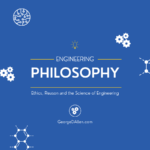New Options Generation – Problem Solving Method

New Options Generation - Problem Solving Method
Introduction – Solving a Problem Developing Solution Sets Options
The primary purpose of this article is to address the necessary step of Options Generation (Solution Sets) as proposals for a defined problem. The argument presented is to do more Engineering Work, in order to gain a better result. Then address tools and method to utilize in doing so.
Overall, it is common practice to engage into reactionary decision for the obvious problem, in order to fix it with the most obvious “easy solution” set. Moreover, since the problem manifest itself in some defect and comes from reports or warranty data, it creates a “notion” associated with an obvious failure mode. Thus, guiding the problem solver to seemingly simple path of addressing this very issue.
However, along with obvious advice to facilitate a proper Root Cause process and Failure Mode analysis to conclude the preliminary steps, I suggest to Generate Options for the Solution Set proposal, in order to do proper Engineering analysis for the potential fix. The approach will allow to investigate the pros and cons of the options and present the opportunity for the decision makers to weigh in during the Impact Analysis review.
(Impact Analysis is to be addresses in a separate article.)
Options Generation – General Concept Approach
The concept is simple: let’s generate the list of options for the discussion related to the approach to solve a given problem. The method is even simpler. Let’s list the obvious from the get go:
- Initial Option Zero – if you do nothing – what is the impact?
- Historical Reference Option One – What was the previous design / release before the current one?
- Obvious Option Two – If the actual failure mode is understood, what is the solution set to address it?
- Option Three – Other unknown Solution Set
Firstly, Comment: With a little investigation and no Engineering Work yet done, the problem yields the list presented and the path to begin an Engineering development work.
Followed by Stipulation: All of the presented options are valid and feasible, and will warrant attention. In doing these preliminary investigations the engineer in charge may learn certain information. This will help to continue with the Solution step and allocation of the necessary resources.
Finally, Opportunity: To generate a list of possible options, including “out of the box” creative candidates. This allows to come up with the options which are outside of the local design boundaries and may lead to interesting results. Moreover, this work may contribute to the future R&D development.
DFSS, Pugh Method for the complex problems Development of the Solution Sets
There are several problem-solving schools, methods, approaches. The discussion here will be based on the Design for Six Sigma using the Pugh method for the Options Generation. (See references.)
Furthermore, The employment of the systematic knowledge generation and formatting it into development of requirements sets, then transforming that into the feasible testable options is the way to go. This approach will allow to:
- Develop each feasible Option (Solution Set) for the same desired outcome
- All options can be evaluated against the same criteria set
- The criteria set is open for the functional, interface, cost, timing and other requirements
- Therefore, in comparison analysis there is an opportunity to get the unbiased quantifiable result
DFSS – Definition: Design for Six Sigma (DFSS) is a collection of best-practices for the development of new products and processes. It is sometimes deployed as an engineering design process or business process management method. DFSS originated at General Electric to build on the success they had with traditional. (The DFSS will be addressed in a separate article.)
Pugh Method – Definition: The decision-matrix method, also Pugh method or Pugh concept selection, invented by Stuart Pugh, is a qualitative technique used to rank the multi-dimensional options of an option set. It is frequently used in engineering for making design decisions.
Options Generation - Example
The following is an example of the multiple options generated for the problem. Consider a scenario in which a car manufacturer faces a persistent issue with the premature wear of suspension components in one of their popular models. This problem affects vehicle performance and customer satisfaction, making it imperative to find a durable solution. To address this complex problem, the engineering team embarks on an options generation process to develop multiple solution proposals.
Firstly, the team investigates using higher-grade materials for the suspension components. This option focuses on improving the durability and wear resistance of the parts, thus extending their lifespan. Transitioning to more robust materials, however, could increase manufacturing costs.
Secondly, the team considers redesigning the suspension geometry. By optimizing the alignment and load distribution, this proposal aims to reduce stress on the components, thereby mitigating premature wear. This solution might involve more significant initial design changes but could lead to substantial long-term benefits in terms of performance and durability.
Thirdly, the team explores the possibility of introducing an advanced lubrication system. Enhanced lubrication can reduce friction and wear, improving the overall longevity of the suspension parts. This option requires integrating new technology into the existing design, which could involve both technical challenges and additional costs.
Additionally, the team evaluates implementing a regular maintenance schedule that includes periodic inspections and part replacements. While this option doesn’t directly solve the problem, it can manage the issue by ensuring components are replaced before significant wear occurs. This approach may be less costly upfront but requires ongoing attention and customer compliance.
Conclusion - Options Generation
In conclusion, the options generation process involves exploring various strategies, each with its advantages and trade-offs. Moreover, by considering multiple solutions, the engineering team can weigh the potential impacts on cost, performance, and customer satisfaction, ultimately selecting the most effective approach to resolve the complex problem. Furthermore, this thorough analysis allows for a comprehensive understanding of the problem’s nuances and encourages innovative thinking. Therefore, transitioning from traditional problem-solving methods to a more strategic options generation approach can significantly enhance the overall quality and reliability of the final product.
Moreover, this process underscores the importance of proactive problem-solving in product development. Consequently, by not settling for the most obvious solution, engineers can uncover more effective and sustainable solutions that better meet customer needs and expectations. The options generation process, therefore, not only addresses the immediate issue but also contributes to long-term business success by fostering a culture of continuous improvement and innovation. Ultimately, this methodology ensures that products are designed with a holistic view, balancing technical feasibility, economic viability, and user satisfaction, which is crucial in today’s competitive market landscape.
References:
- DFSS – https://en.wikipedia.org/wiki/Design_for_Six_Sigma
Pugh Method – https://en.wikipedia.org/wiki/Decision-matrix_method
- Step Function – https://en.wikipedia.org/wiki/Step_function
- Engineering Change Request – https://georgedallen.com/engineering-change-requests-ecr-new-best-practices/
- Theory of Change – https://georgedallen.com/theory-of-engineering-change-in-new-product-development/
- Explain the Concept Clearly – https://www.useloops.com/blog/how-to-explain-a-concept-clearly-and-concisely
About George D. Allen Consulting:
George D. Allen Consulting is a pioneering force in driving engineering excellence and innovation within the automotive industry. Led by George D. Allen, a seasoned engineering specialist with an illustrious background in occupant safety and systems development, the company is committed to revolutionizing engineering practices for businesses on the cusp of automotive technology. With a proven track record, tailored solutions, and an unwavering commitment to staying ahead of industry trends, George D. Allen Consulting partners with organizations to create a safer, smarter, and more innovative future. For more information, visit www.GeorgeDAllen.com.
Contact:
Website: www.GeorgeDAllen.com
Email: inquiry@GeorgeDAllen.com
Phone: 248-509-4188
Unlock your engineering potential today. Connect with us for a consultation.

